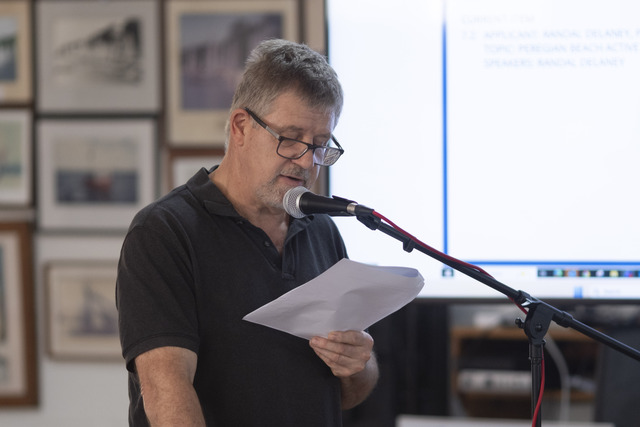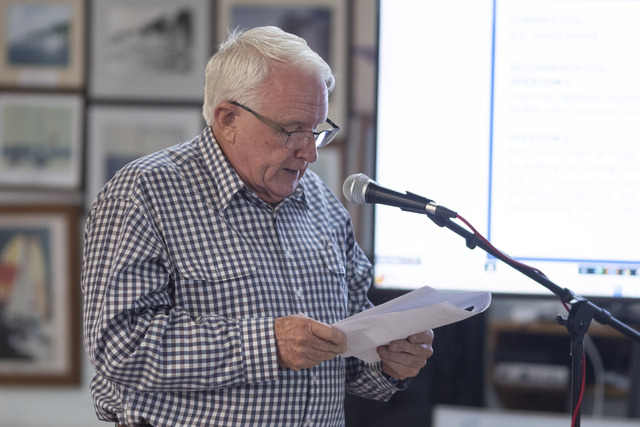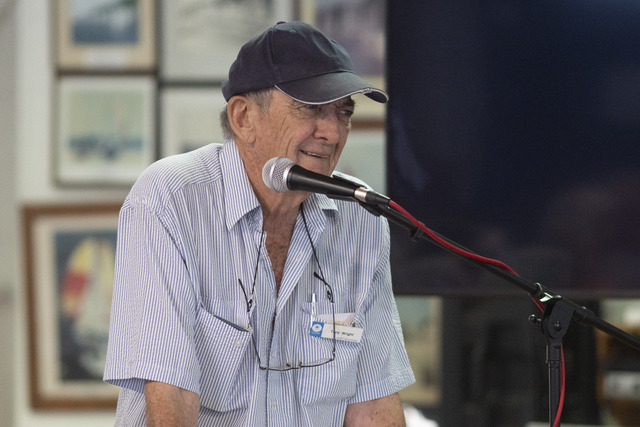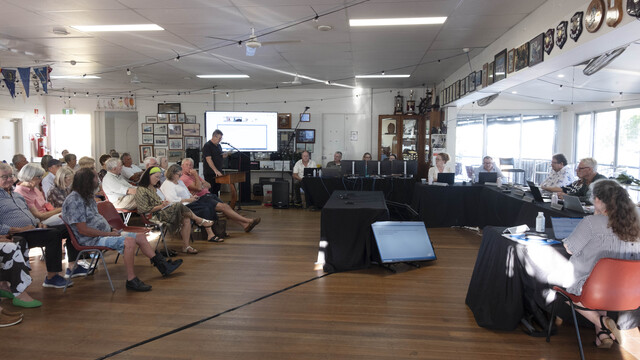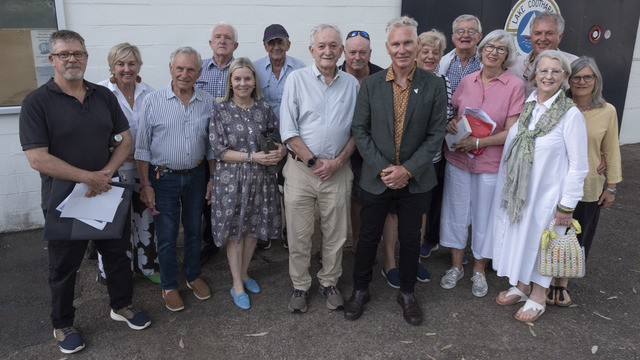
A Peregian Beach residents group called on Noosa Council to halt both its Active Streets pilot proposed for an 800m section of Lorikeet Drive and any further planning for Active Streets in the area when they attended council’s ordinary meeting on 20 November.
Council website describes an Active Street as one that prioritises bike riders and people walking with safer pathways, bike riding-priority zones, lower speed limits, and traffic calming features.
Residents at the meeting made their protest of the project heard through a deputation and several questions before discussing them further with councillors during a break in the meeting.
In his deputation resident Randal Delaney told council the proposed project “directly contradicted the preferences of most local residents” who perceived the project as “poorly planned, overly radical, largely unwanted and failing to meet community needs” and that resident views on it had been largely disregarded.
“Residents have not received clear, impartial, or thorough information from council regarding the actual impacts that these projects will have on their local community. From the outset, council has treated the initiative as a beneficial idea and has subsequently sought to justify its implementation, even though the proposal does not align with or address the needs of the community, or suit this residential scenario,” Mr Delaney said.
“Despite numerous enquiries and requests for further details from residents, significant concerns and issues remain unresolved in council communications. “Major topics raised by the community have either gone unanswered or have not been meaningfully addressed.
“Members of the community feel council has failed to engage in genuine consultation, with little effort made to involve or listen to those that will be most affected.
“The lack of meaningful dialogue has left residents feeling excluded from decision-making processes, fuelling further dissatisfaction and reinforcing the disconnect between council’s actions and community expectations.”
When resident David Phipps asked for the project’s design development to encompass “genuine and meaningful consultation with impacted residents” Director Infrastructure Services Shaun Walsh said council agreed “community involvement must be genuine and ongoing” and laid out the project’s community engagement.
“For this project, engagement has not been limited to a single stage,” he said.
“We have:
– involved residents and community groups through the Project Reference Group during route and treatment selection;
– held multiple information sessions during the preliminary design phase;
– undertaken doorknocks and offered one-on-one meetings; and
– continued adjusting elements of the design based on resident feedback – particularly around parking, traffic management, connectivity, and environmental values.”
Mr Delaney told council the level of resident opposition to the proposal was evidenced by the submission of a formal petition with signatures from more than 140 local residents. He said residents believed council had placed more weight not on the support of residents but of special interest groups such as those involved in “tourism, events, cycling, and associated businesses”.
“Feedback from the community highlighted a clear desire for the development of additional off-road pathways and bikeways, enhanced connectivity between residential neighbourhoods and key local amenities, and improved crossing facilities at major roads. And while there was a desire for safe recreational pathways the focus was on projects that would benefit access to activity centres, schools, and recreation facilities. Furthermore, council’s own transport strategy reinforced the need for safe road crossings and prioritised encouraging walking and cycling as a preferred daily transport option,” he said.
“The current proposal, however, does not deliver on these expectations, particularly with respect to overall connectivity. There is a lack of adequate safe crossing opportunities on major roads such as David Low Way (DLW) and Emu Mountain Road, together with a noticeable absence of interconnected off-road shared pathways within the precinct.”
Mr Delaney said residents argued for council to create an off-road shared pathway within the road reserve along the western side of David Low Way but despite repeated calls, council has not provided an adequate or detailed explanation for its decision to reject that.
“Community members argue that this alternative is not only safer and more straightforward, but could also be more cost-effective and would be better suited at preserving local amenity. The kilometres of shared pathway on DLW’s west side in Coolum, which already form part of the coastal pathway, sets a strong precedent for seriously considering this option,” he said.
“Developing a dedicated pathway along the edge of the National Park would help maintain a fire buffer for the residential precinct, offer a more scenic route and provide the opportunity to create shaded rest points, entirely free from driveways and motor vehicle conflict. These recreational and tourism benefits are not achievable through the Lorikeet Drive alignment.”
Mr Delaney said Peregian Beach Community Association (PBCA) had also urged council “to give due consideration to the use of the western road reserve along DLW”.
In a question put to the council meeting resident Tony Wright asked that council explain “why it has chosen to implement a challenging path through four interconnecting residential streets with hills, intersections, bends and blindspots, rather than the simpler, viable, safer and less disruptive alternative route along the road reserve west of David Low Way”.
Mr Walsh told the meeting “council did look closely at the David Low Way corridor during the Cycling and Walking Strategy”.
“This study sought to plan safer, more connected walking and cycling routes between Tewantin and Peregian Beach and was supported by a Project Reference Group (PRG) made up of representatives from local residents’ associations, community and sporting groups, bike shops, and tourism providers,” he said.
“While it may appear simpler on a map, the David Low Way was not evaluated as a safe or feasible location for a walking and cycling route. The corridor carries high-speed traffic, has complex intersections, and includes narrow, uneven and environmentally sensitive areas in the western road reserve. “Building a continuous, accessible pathway there would require major earthworks, vegetation removal and significant structural works, with a poorer safety outcome for users. In contrast, the Lorikeet Drive route scored the highest across all assessment criteria. Residential streets offer a quieter, low-stress environment that is safer and more comfortable for people of all ages, especially children, seniors and less-confident riders.
“Active Street treatments are specifically designed to manage bends, hills and intersections by slowing traffic, improving visibility and creating a calmer neighbourhood feel. Importantly, this route also delivers the best long-term connectivity – linking homes, parks, schools, the coastal pathway network and the village. It also enables council to address existing issues along Lorikeet Drive such as drainage, kerb upgrades and local safety improvements.”
Mr Phipps asked council, given the “significant opposition”, would it halt progress on the proposed project.
In response Mr Walsh said council understood that some residents have concerns but had “also received positive support and feedback on the project”.
“While staff have not been directed to pause or stop work on the project, the project team is discussing next steps and exploring opportunities for additional community communication with Councillors later this month,” he said.
“It’s important to note that the Active Street proposal for Lorikeet Drive is the result of several years of technical work and strong support for safer, more connected walking and cycling options in Peregian Beach. It directly responds to long-standing issues raised by locals, including speeding, pedestrian safety and driveway access challenges.
“An Active Street was chosen because it offers the safest and most suitable treatment for this corridor. It slows traffic, creates a calmer neighbourhood feel, and makes it easier for people of all ages to walk, ride and move around.
“Communities across Australia are embracing this approach due to its proven benefits for safety, health, local amenity and street greening. Importantly, the project is fully funded by State and Federal programs, not by Noosa ratepayers, and also enables council to upgrade kerbs, improve stormwater and drainage, replace the ageing Lorikeet Park bridge and enhance landscaping along the street.
“Our goal is to deliver a safer, greener and more accessible street that benefits the entire neighbourhood.”

